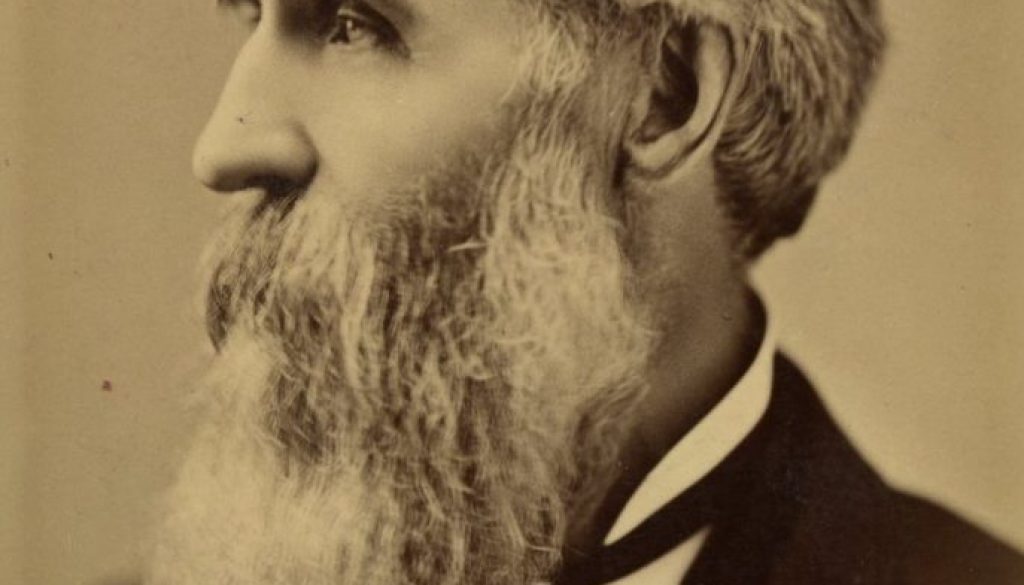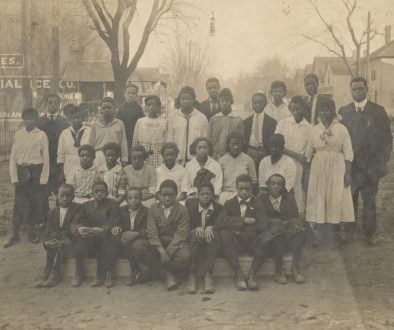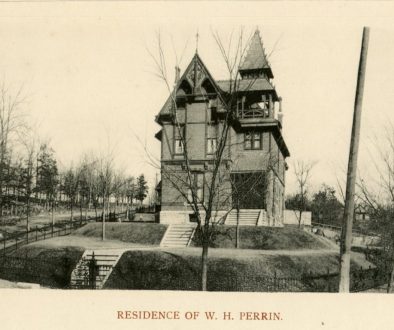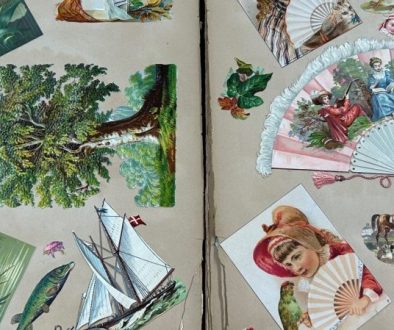Adams Earl 1819- 1898
This article first appeared in the TCHA newsletter Weatenotes, Vol. XI, No. 1, January-February 1982
Adams Earl, next to youngest in an old-fashioned household of 15 children, was a strapping youth of 17 when the family migrated from Fairfield County, Ohio to Tippecanoe County, Indiana in the winter of 1836-37. On the Wea Plains, a few miles southwest of Lafayette, they broke the prairie and settled in as thrifty farmers. Young Adams, ambitious and energetic, branched out, building flatboats on the banks of the Wabash, loading them with Wea produce and floating all the way down to New Orleans. In 1848 he moved to Lafayette, then married Martha Hawkins, daughter of the owner of Shadeland Farm, a fertile Wea tract of some 1600 acres.
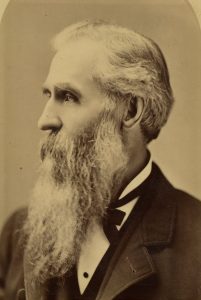
In a manner characteristic of his time, he got into all sorts of lucrative enterprises: general merchandising, dry goods, wholesale grocery business with Moses Fowler, pork and beef packing, promoting railroads, banking and, again with Fowler, large-scale steer feeding in Benton County. Adams Earl was a resourceful example of the self-made man who prospered in nineteenth century America, capping his worldly success by establishing a ten-acre Lafayette estate, known as Fountain Grove or Earlhurst, on which were extensive rose and vegetable gardens, a deer park and a rambling house of numerous rooms, crystal chandeliers and ornate ceilings.
The achievement for which he is best known, however, is as a breeder and improver of Hereford cattle. Having purchased Shadeland Farm in the 1870’s, Adams Earl formed a partnership with his son-in-law, Charles Benedict Stuart, a Lafayette lawyer, and in 1880 they began importing from England choice Herefords from the best British herds. The breed was notable for its uniformity of color–red body, white markings and white face—and for its strong constitution, early maturity and ability to thrive under adverse conditions, able, if necessary, to rough through a winter on short rations. Introduced into the United States by Henry Clay in 1817, Herefords were not well known in Indiana, but Adams Earl was foremost in making the breed familiar to Hoosier stockmen as well as others. He played a prominent role in founding the American Hereford Cattle Breeders Association in 1881, and became first treasurer of the organization, for which Stuart framed the rules and by-laws.
In 1882 the importation of 130 head, the largest ever made up to that time, contained superior specimens: Sir Bartle Frere 8419 and Romeo 6420, both sons of Lord Wilton, a famous British sire.(1) Sir Bartle, twice champion Hereford at the English Royal show, was known as a heifer-getter, his Lady Wiltons having enriched many herds. He also sired steers that did well at the Chicago International, one called Wabash winning a grand championship as a three-year-old weighing 2,350 pounds and dressing out at 70.35%, a record in the 1880’s.(2) Romeo had a distinguished show career in this country and became a dependable herd sire.
Prince Rupert 7000, another son of Lord Wilton, was also in the importation, likewise Garfield 7015, as a calf in his class at the English Royal, as well as at the Bath and West Shows. At Shadeland, Garfield was the progenitor of sturdy stock, his most famous get being Dale and the Earl of Shadeland 22d 27147, both praised as two of the finest show animals ever produced in this country—deep-bodied, broad and square—both successful as pre-potent sires.
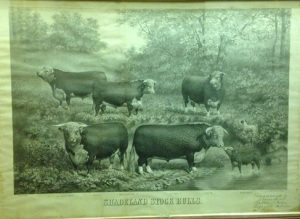
Later, The Grove 3rd 2490, at the age of 11, came from Culbertson herd in Herdfordshire, acquired by Earl and Stuart for $7000, perhaps the top price for a bull of his years. By the late 1880s and early ‘90s, annual Later, The Grove 3rd 2490, at the age of 11, came from Culbertson herd in Herdfordshire, acquired by Earl and Stuart for $7000, perhaps the top price for a bull of his years. By the late 1880s and early ‘90s, annual importations having built up a herd of over 200 head, Shadeland Farm was a mecca for cattlemen who came from all over to inspect the great American Hereford showplace of its time. Annual sale catalogues attracted buyers from Michigan to Texas, from Ohio to California. Some judges said that the Shadeland herd was the finest in the world.
Thus Adams Earl stands out as an enlightened entrepreneur. Of what he was like as a person we do not hear much, but he was said to have been generous and public-spirited. Evidently he was a sociable man, judging by the prevailing hospitality at Earlhurst: large summer parties of hundreds of guests on the south lawn, lighted by strings of Japanese lanterns; open house on New Year’s Day, lavish refreshments, dancing and euchre. In an obituary the Lafayette Evening Courier remarked: “No man has worked harder for Lafayette than Adams Earl… His was the right spirit, his was the indomitable will…a religious man…but not narrow minded and fanatical. He was capable of serving all purposes well.”
(1) The number following the name means registry as a purebred and a place in the Hereford herd book. This record, a roster of blue bloods publishing annually, is the bovine equivalent of Debrett’s Peerage. Probably it enables many herdsman to know more about the genealogy of his stock then he knows about his own family tree.
(2) Fat steers nowadays are marketed at about half the age of Wabash and half the weight. Dressing percentage is lower now, about 60% because whereas a dressed carcass once contained a good deal of fat, we have now become so nervous about fat that it no longer figures in dressed weight.

